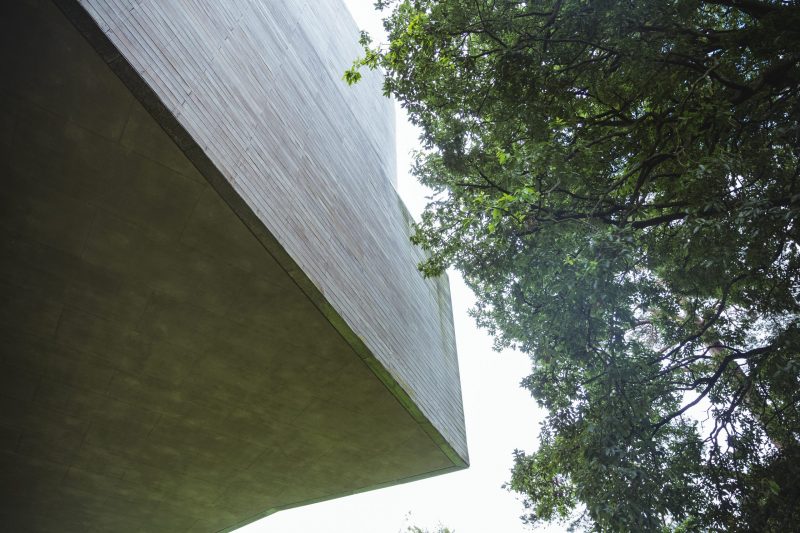Creating An Inclusive Landscape
Architecture for Non-Humans seems like a strange topic. When we think of architecture, we generally think about residential or office buildings, or maybe even the hospitals and banks around us. To put it another way, our go-to connection is architecture for humans. However, there is a growing recognition in the architectural world of non-humans, such as birds, animals, marine life, and insects. Non-traditional architecture, such as architecture for non-humans, allows us to escape our comfort zones, challenge ourselves, and broaden our scope of work. Throughout this piece, we’ll discuss the various principles and examples of creating environments and living spaces for non-humans that work towards a more inclusive landscape.
What is Non-Human Architecture
Architecture for Non-Humans is a less conventional form of architecture. The concept redefines what we know of creating an inclusive living environment. The idea is to design spaces that fulfill the needs, behaviors, and ecological roles of non-humans. This concept has received more and more attention over the years, as architects, what we develop has a substantial impact on living creatures. As such, our designs should consider all life forms.
Understanding Non-Human Needs
Just like any other project, before you get started designing non-human environments, you must first understand the needs that you’re catering to. Every species has its own set of requirements in terms of living space. Take the below for example:
- Insects: Insects like butterflies, or even bees for that matter, require specific types of vegetation for them to feed and nest. When creating living spaces for these insects this needs to be considered. But they also need their shelter to provide enough protection from predators.
- Birds: If we were to create a space for birds, their requirements would be unique again. For example, birds prioritize safe nesting sites. Then you must consider their access to food. Some elements of your design may include nesting boxes, perches, and bird-friendly glass.
- Marine Life: Designing for any sort of aquatic creatures will require you to build a space that mimics their natural habitat as much as possible. In this circumstance, you would look to include coral reefs, mangroves, and seagrass beds.
- Microorganisms: Microorganisms are tiny life forms that support soil health and nutrient cycling. It’s important to design environments that support this.
Principles of Non-Human Designs
Non-human architectural design focuses on several key principles:
- Ecological Integration: When designing for non-humans, the design must integrate seamlessly with the natural surroundings—some areas we need to pay close attention to include water flow, nutrient cycling, and energy systems.
- Habitat Enhancement: The end goal should always be to enhance the natural habitat. For example, designing vertical gardens plays an important role in increasing biodiversity within urban areas. Vertical gardens can provide more efficient shelter in addition to supplying food sources for specific types of wildlife such as birds, insects, and small mammals.
- Multi-Species Interaction: Some challenges you may face include designing spaces that allow for different species to co-exist and interact with each other. All within one built environment. Multi-species habitats can provide a more stimulating and interactive living experience for the animals. However, it’s important to consider separating conflicting personalities. Typically, animals that live are good candidates for peaceful cohabitation.
- Sustainability and Resilience: As with all other architectural projects, it’s important to consider how both sustainability and resilience can be integrated. Regardless of our designs, we are collectively working towards a more sustainable future. Furthermore, our environments are ever-changing, and we need to create designs that can withstand harsh environmental concerns.
Challenges
While the consideration of non-human architecture holds many benefits for the environment, it also presents several challenges for architects:
- Complexity of Needs: As architects, we understand human needs and can easily address these requirements. Everyday life gives us ideas on how simple changes can positively impact our living spaces. However, understanding the intricate needs of various wildlife species can be complex. Often, this requires extensive research or collaboration with biologists and ecologists.
- Human vs. Non-Human Needs: Another challenge we face is how to effectively balance the needs of human occupants and non-humans in the same environment.
- Economic Considerations: Other issues we may have to overcome relate to cost. Incorporating these elements into architecture may involve additional costs to the project. However, depending on the development, these features may lead to long-term benefits, such as enhanced ecosystem services or even increased property values, as such the client may push for their inclusion.
- Regulatory and Planning Issues: One thing to be aware of when working on non-human-centric designs is that the building codes and planning regulations may not always be accommodated and as such policy changes may be necessary.
What Can We Expect For The Future of Non-Human Architecture?
As you can imagine, the more that awareness of environmental and ecological issues grows, the more that non-human-centric architecture is likely to increase in popularity. Looking at trends in the market, future developments may include:
- Innovative Design Tools: As non-human architecture becomes more popular. We can only assume that there will be a stronger focus on the technology we use. As such, we expect advances in technology, such as simulation tools and biomimetic design software. Or possibly other advances that can improve architects.
- Interdisciplinary Collaboration: As designs grow more complex, we expect there to be an increase in collaborations between architects, ecologists, biologists, and urban planners.
- Public Awareness and Education: Similar to how sustainability has grown in recent years. We can expect the more developments we see with a focus on non-human architecture, the more awareness will increase.
- Policy and Regulation Changes: With the increased demand for non-human designs, various policies will have to change to help integrate these design concepts into mainstream architectural practices, allowing for smoother and more efficient processes.
A New Era of Design
Architecture for Non-Humans represents a new era of design. It is a transformative approach to traditional built environments. Rather than solely considering human needs, we consider the needs of various species within the environment. We then begin to integrate the associated ecological principles into our designs. This means that architects can create spaces that efficiently serve human needs, but also promote biodiversity. Simultaneously, enhancing ecosystems and building a more harmonious relationship with the natural environment.




